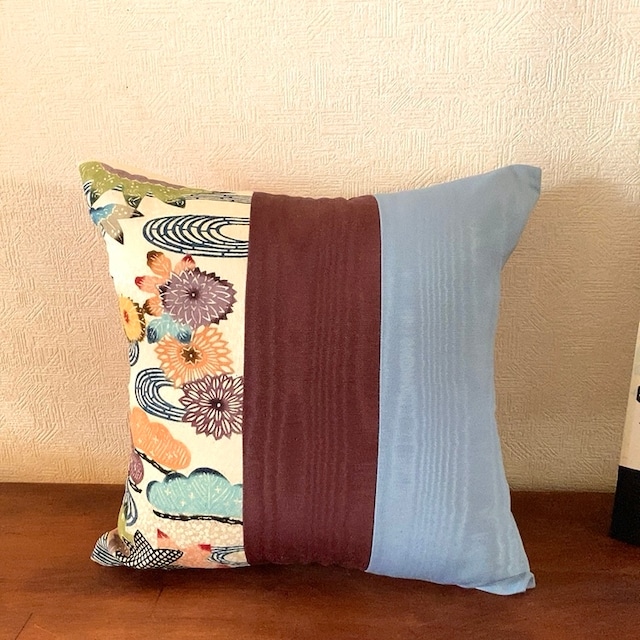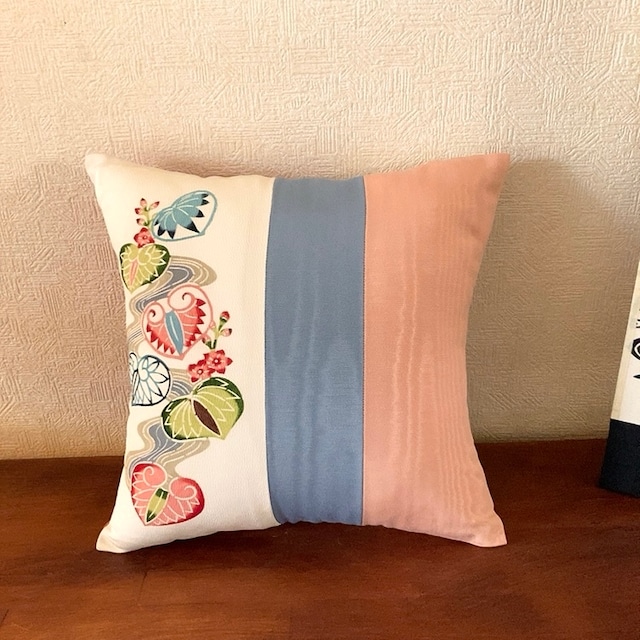5,000円以上のご購入で
送料無料
【モダン紅型】花尽くし 青紫 (クッションカバー)








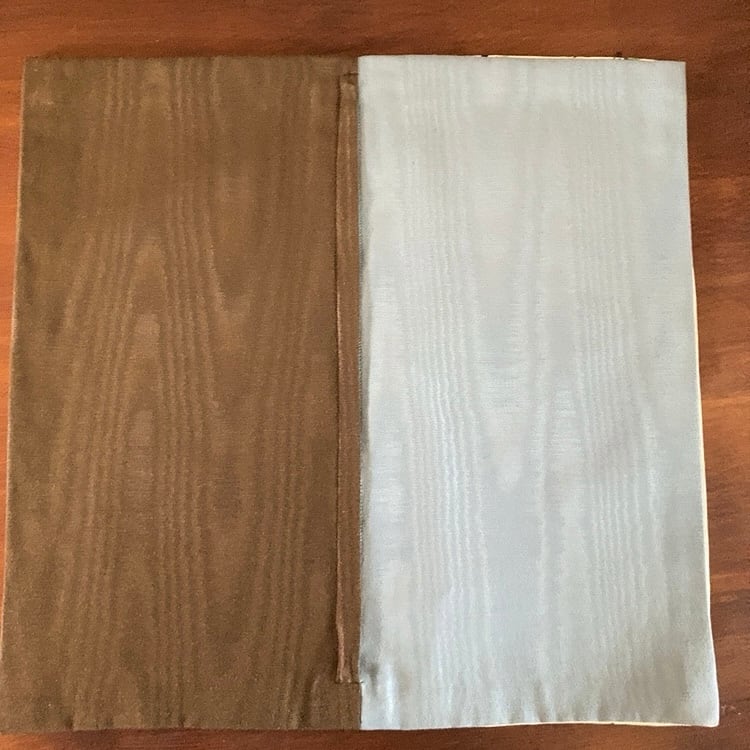
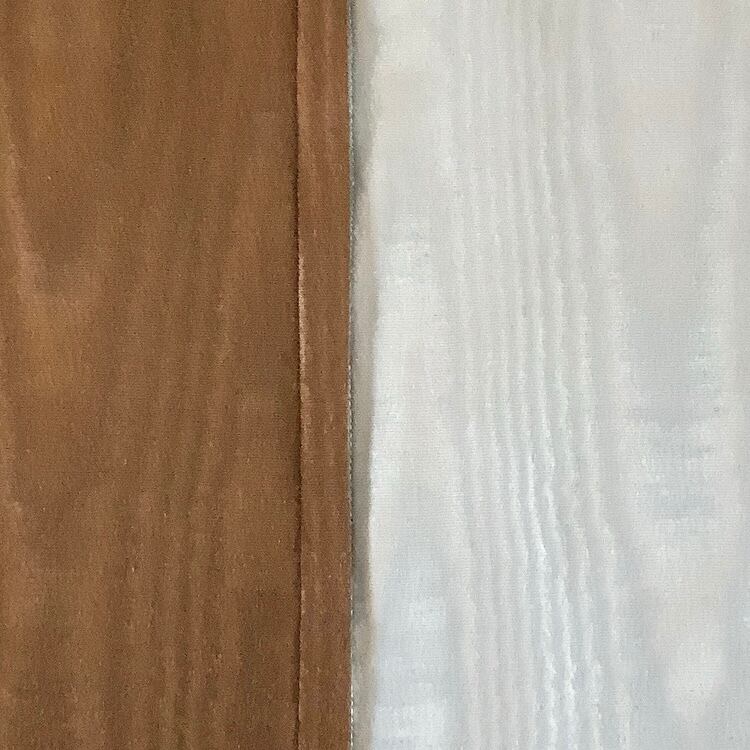




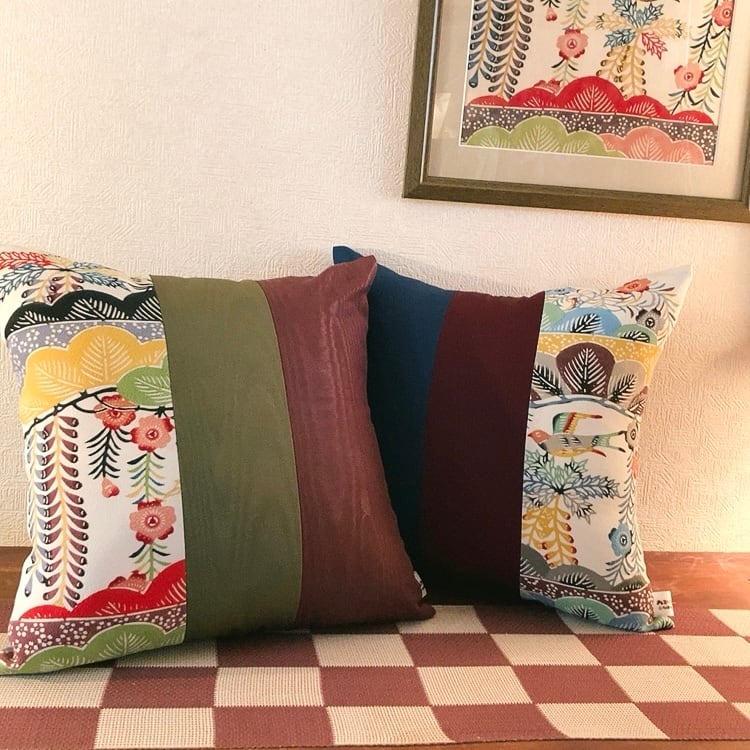
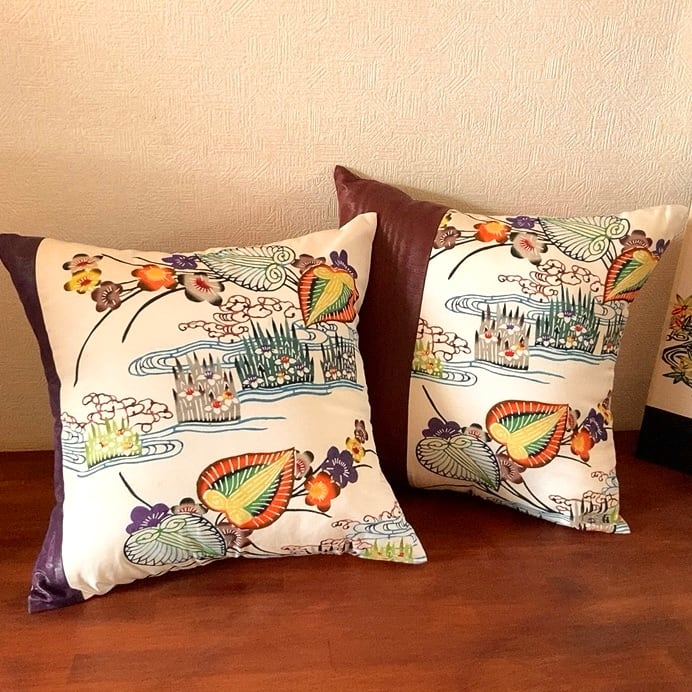

5,000円以上のご購入で
送料無料
【モダン紅型】花尽くし 青紫 (クッションカバー)
【モダン紅型】花尽くし 青紫 (クッションカバー)
¥14,300
SOLD OUT
花尽くしのクッションカバーです。(クッション材なし)
柔らかな雰囲気がお部屋を明るくしてくれる可愛らしいアイテムです。
インテリアのアクセントに使うのもおすすめです。
ソファやベッド周りなどに置くだけでお部屋が華やぎます。
日常生活に染めの彩りを添えてみませんか?
<梅文>
植物文のうちでも梅は古来から日本人に最も親しまれ、文様としても取り入れられています。
原産地は中国ですが、奈良時代に日本に伝えられた梅は、その愛らしい花の姿、独特の幹や枝ぶり、寒中に漂う芳香から、万葉集にも数多く歌われています。
文様としては、絵巻や浮世絵や絵画、器物や屋内装飾など多様に表現されています。
<菊文>
菊は昔から秋を代表する植物です。絵画や工芸品にも多く取り入れられています。
菊文としての意匠化も鎌倉から室町時代に見られ、桃山時代には日本的意匠化の秋草の一つとして扱われるようになりました。江戸時代には鉢作りを競うほどに品種改良が進んで菊の種類も多くなり、それを映して菊の意匠も可憐な野菊から大輪のものまで、様々な表現が現れ、まさに菊文が咲きほこった時代となりました。
<竹文>
竹の幹、節、葉などを図案化した文様です。松、梅と並んで吉祥文様のひとつ。
梅、菊、蘭とともに四君子のひとつで、取り合わせのよいものとして、雀や虎と一緒に描かれることが多いです。真っすぐで堅く、中は空で隠すことなく、常に緑で群生するところから、笹とともに清和の証として文様に用いられています。
※四君子(しくんし)とは、蘭、竹、菊、梅の4種を、草木の中の君子として称えた言葉。
<犬蓼>
イヌダテ 別名アカマンマ
北海道から沖縄まで、道端など各地で見られる植物です。
鮮やかな濃いピンクの花をたくさん咲かせます。
小さな赤い花と実を赤飯に見立て赤まんまとも呼ばれ、食用となる蓼に対し辛味が無く食べられない蓼の意で犬蓼の名が付いたとされています。
花言葉「お役に立ちたい」「貴方の役に立ちた」「貴方の力になりたい」
--------------------------------------------------------
サイズ:高さ:約39cm×横:約39cm
染色生地:絹
※購入前に必ずご確認下さい※
◆おかめ工房オリジナル商品です。
◆手染めになりますので、一点ものです。
◆染めムラなどある場合がございます。ご了承ください。
※商品の色は、可能な限り実物に近い色を出そうとしておりますが、携帯やパソコン、スマホのモニター環境により若干異なって見える場合がございます。
--------------------------------------------------------
<紅型染め工程>
1.型彫り:デザインを決め、型紙へ転写し、模様部分から彫っていきます。
2.紗張り:型紙を紗という生地で補強、固定する作業です。カシュー液またはペンキを使用します。
3.糊置き:型紙の上からペースト状の防染糊をヘラで薄く均一に伸ばし、生地に模様を写し取っていきます。
4.豆引き:染料が糊の裏側に染み出るのを防ぎ、染料の染め付けを良くし、定着させる作業です。
5.色差し(1度塗り):模様部分(糊がおかれていない部分)を染めていきます。染料・顔料を調整し刷毛で布に刷り込み配色します。顔料は豆汁で溶くと固着剤の役割を果たし、にじみ防止になります。
6.色差し(2度塗り):2回色を刷り込む事で色ムラを無くし、しっかり色を入れます。
7.隈取り:紅型の大きな特徴の一つです。色の上から隈取り用の刷毛で濃い色のぼかしを入れ陰影をつけます。ぼかし染めは図柄にアクセントをつけ立体感を出す効果があります。
8.明礬作業:完全に乾いた後、色落ち止めとして主に明礬を用います。
9.水元:約3日程色を定着させた後、水に浸します。糊が柔らかくなったら、布を斜めに引っ張り糊をはがすように落とします。
10.湯のし:蒸気を使ってシワをきれいに伸ばしていきます。反物幅を均等に揃えるための加工のことです。
11.仕立て:着物や帯、作品に仕立てて完成します。全行程手作業で行っており、全て1点ものとなります。
沢山の工程があり、ひとつひとつ手作業で染色しています。
紅型本来である「顔料」という染料を使い、昔から変わらない工程や技法で本格的な紅型作品を制作しております。
--------------------------------------------------------
A cushion cover full of flowers.
The soft atmosphere of this lovely item will brighten up any room.
We recommend using it as an accent in your interior design.
Just by placing it on a sofa or around a bed, it will brighten up the room.
Why not add a touch of color to your daily life?
<Ume Plum Design>
Among botanical designs, the plum tree has been most familiar to the Japanese since ancient times and has been used as a pattern.
Originating in China, the ume was introduced to Japan in the Nara period (710-794), and its lovely flowers, unique trunk and branches, and fragrance that wafts in the cold have been sung about in many poems in the Manyoshu (Anthology of Myriad Leaves).
The design has been used in a variety of ways, including in picture scrolls, ukiyoe woodblock prints, and paintings, as well as on vessels and for interior decorations.
<Chrysanthemum design>
Chrysanthemums have long been a representative plant of autumn. It is often used in paintings and crafts.
The design of chrysanthemum patterns can be seen from the Kamakura (1185-1333) to Muromachi (1333-1573) periods, and by the Momoyama (1573-1573) period, chrysanthemums came to be regarded as one of the Japanese autumn plants. In the Edo period (1603-1867), the variety of chrysanthemums was improved to the extent that they competed with each other in making pots, and many different types of chrysanthemums were produced.
<Bamboo design>
This pattern is based on the trunk, joints, and leaves of bamboo. Along with the pine and plum trees, it is one of the auspicious designs.
It is often depicted together with sparrows and tigers as a good combination of the four kunshi (four rulers), along with plum blossoms, chrysanthemums, and orchids. The four princes are straight and rigid, with an empty space inside that does not hide them, and they always grow in clusters of green.
The term "Shikunshi" refers to the four species of orchids, bamboos, chrysanthemums, and plums, and refers to them as the "sovereigns" among plants and trees.
<Inudate>
Also known as "akamanma.
This plant can be found along roadsides and in many other places from Hokkaido to Okinawa.
It produces many bright dark pink flowers.
It is said that the name "inudate" comes from the fact that the small red flowers and fruits resemble red rice and are called "akamanma," meaning that they have no pungency and are inedible, while tates are edible.
In the language of flowers, "I want to be useful," "I want to be useful to you," "I want to be of help to you.
--------------------------------------------------------
Size: Height: approx. 39cm x width: approx. 39 cm
Dyed fabric: silk
Please be sure to check before purchasing*.
◆Original product of Okame Kobo.
◆This product is hand-dyed, so it is one-of-a-kind.
◆It is hand-dyed and one-of-a-kind. Please understand.
The colors of the products are as close to the real thing as possible, but they may look slightly different depending on the monitor environment of your cell phone, computer, or smartphone.
--------------------------------------------------------
<Bingata Dyeing Process>
1. Kata-bori: The design is decided, transferred to a stencil, and carved starting from the patterned area.
2. Gauze stretching: Reinforcing and fixing the katagami with a fabric called gauze. Cashew solution or paint is used.
3. Glue-placement: Paste paste is spread thinly and evenly over the pattern using a spatula, and the pattern is copied onto the fabric.
4. Mamegaki: This process prevents the dye from seeping through to the underside of the paste, and helps the dye to adhere and fix in place.
5. Color-application (one coat): Dyeing the patterned area (the area not covered with glue). Dye and pigment are adjusted and brushed onto the cloth with a brush to distribute the colors. Dissolving the pigments in soybean juice acts as an adhesive and prevents blotting.
6. Color is applied twice (two coats).
7. Kuma-dori (shading): This is one of the main characteristics of Bingata. The kumadori brush is used to add shades of darker colors on top of the colors. Bokashi-dyeing has the effect of accentuating the design and giving it a three-dimensional effect.
8. Aluminum water: After completely drying, aluminum water is mainly used to prevent the colors from fading.
9. After allowing the colors to set for about three days, soak in water. When the glue softens, pull the cloth at an angle to peel off the glue.
10. Yunoshi: The wrinkles are stretched out cleanly using steam. This process is used to make the width of the fabric even.
11. Tailoring: The fabric is finished by tailoring it into a kimono, obi, or work of art. The entire process is done by hand, and each piece is unique.
There are many processes and each piece is dyed by hand.
We produce authentic Bingata works using dyes called "pigments," which are the original Bingata, and using the same processes and techniques that have been used since ancient times.
柔らかな雰囲気がお部屋を明るくしてくれる可愛らしいアイテムです。
インテリアのアクセントに使うのもおすすめです。
ソファやベッド周りなどに置くだけでお部屋が華やぎます。
日常生活に染めの彩りを添えてみませんか?
<梅文>
植物文のうちでも梅は古来から日本人に最も親しまれ、文様としても取り入れられています。
原産地は中国ですが、奈良時代に日本に伝えられた梅は、その愛らしい花の姿、独特の幹や枝ぶり、寒中に漂う芳香から、万葉集にも数多く歌われています。
文様としては、絵巻や浮世絵や絵画、器物や屋内装飾など多様に表現されています。
<菊文>
菊は昔から秋を代表する植物です。絵画や工芸品にも多く取り入れられています。
菊文としての意匠化も鎌倉から室町時代に見られ、桃山時代には日本的意匠化の秋草の一つとして扱われるようになりました。江戸時代には鉢作りを競うほどに品種改良が進んで菊の種類も多くなり、それを映して菊の意匠も可憐な野菊から大輪のものまで、様々な表現が現れ、まさに菊文が咲きほこった時代となりました。
<竹文>
竹の幹、節、葉などを図案化した文様です。松、梅と並んで吉祥文様のひとつ。
梅、菊、蘭とともに四君子のひとつで、取り合わせのよいものとして、雀や虎と一緒に描かれることが多いです。真っすぐで堅く、中は空で隠すことなく、常に緑で群生するところから、笹とともに清和の証として文様に用いられています。
※四君子(しくんし)とは、蘭、竹、菊、梅の4種を、草木の中の君子として称えた言葉。
<犬蓼>
イヌダテ 別名アカマンマ
北海道から沖縄まで、道端など各地で見られる植物です。
鮮やかな濃いピンクの花をたくさん咲かせます。
小さな赤い花と実を赤飯に見立て赤まんまとも呼ばれ、食用となる蓼に対し辛味が無く食べられない蓼の意で犬蓼の名が付いたとされています。
花言葉「お役に立ちたい」「貴方の役に立ちた」「貴方の力になりたい」
--------------------------------------------------------
サイズ:高さ:約39cm×横:約39cm
染色生地:絹
※購入前に必ずご確認下さい※
◆おかめ工房オリジナル商品です。
◆手染めになりますので、一点ものです。
◆染めムラなどある場合がございます。ご了承ください。
※商品の色は、可能な限り実物に近い色を出そうとしておりますが、携帯やパソコン、スマホのモニター環境により若干異なって見える場合がございます。
--------------------------------------------------------
<紅型染め工程>
1.型彫り:デザインを決め、型紙へ転写し、模様部分から彫っていきます。
2.紗張り:型紙を紗という生地で補強、固定する作業です。カシュー液またはペンキを使用します。
3.糊置き:型紙の上からペースト状の防染糊をヘラで薄く均一に伸ばし、生地に模様を写し取っていきます。
4.豆引き:染料が糊の裏側に染み出るのを防ぎ、染料の染め付けを良くし、定着させる作業です。
5.色差し(1度塗り):模様部分(糊がおかれていない部分)を染めていきます。染料・顔料を調整し刷毛で布に刷り込み配色します。顔料は豆汁で溶くと固着剤の役割を果たし、にじみ防止になります。
6.色差し(2度塗り):2回色を刷り込む事で色ムラを無くし、しっかり色を入れます。
7.隈取り:紅型の大きな特徴の一つです。色の上から隈取り用の刷毛で濃い色のぼかしを入れ陰影をつけます。ぼかし染めは図柄にアクセントをつけ立体感を出す効果があります。
8.明礬作業:完全に乾いた後、色落ち止めとして主に明礬を用います。
9.水元:約3日程色を定着させた後、水に浸します。糊が柔らかくなったら、布を斜めに引っ張り糊をはがすように落とします。
10.湯のし:蒸気を使ってシワをきれいに伸ばしていきます。反物幅を均等に揃えるための加工のことです。
11.仕立て:着物や帯、作品に仕立てて完成します。全行程手作業で行っており、全て1点ものとなります。
沢山の工程があり、ひとつひとつ手作業で染色しています。
紅型本来である「顔料」という染料を使い、昔から変わらない工程や技法で本格的な紅型作品を制作しております。
--------------------------------------------------------
A cushion cover full of flowers.
The soft atmosphere of this lovely item will brighten up any room.
We recommend using it as an accent in your interior design.
Just by placing it on a sofa or around a bed, it will brighten up the room.
Why not add a touch of color to your daily life?
<Ume Plum Design>
Among botanical designs, the plum tree has been most familiar to the Japanese since ancient times and has been used as a pattern.
Originating in China, the ume was introduced to Japan in the Nara period (710-794), and its lovely flowers, unique trunk and branches, and fragrance that wafts in the cold have been sung about in many poems in the Manyoshu (Anthology of Myriad Leaves).
The design has been used in a variety of ways, including in picture scrolls, ukiyoe woodblock prints, and paintings, as well as on vessels and for interior decorations.
<Chrysanthemum design>
Chrysanthemums have long been a representative plant of autumn. It is often used in paintings and crafts.
The design of chrysanthemum patterns can be seen from the Kamakura (1185-1333) to Muromachi (1333-1573) periods, and by the Momoyama (1573-1573) period, chrysanthemums came to be regarded as one of the Japanese autumn plants. In the Edo period (1603-1867), the variety of chrysanthemums was improved to the extent that they competed with each other in making pots, and many different types of chrysanthemums were produced.
<Bamboo design>
This pattern is based on the trunk, joints, and leaves of bamboo. Along with the pine and plum trees, it is one of the auspicious designs.
It is often depicted together with sparrows and tigers as a good combination of the four kunshi (four rulers), along with plum blossoms, chrysanthemums, and orchids. The four princes are straight and rigid, with an empty space inside that does not hide them, and they always grow in clusters of green.
The term "Shikunshi" refers to the four species of orchids, bamboos, chrysanthemums, and plums, and refers to them as the "sovereigns" among plants and trees.
<Inudate>
Also known as "akamanma.
This plant can be found along roadsides and in many other places from Hokkaido to Okinawa.
It produces many bright dark pink flowers.
It is said that the name "inudate" comes from the fact that the small red flowers and fruits resemble red rice and are called "akamanma," meaning that they have no pungency and are inedible, while tates are edible.
In the language of flowers, "I want to be useful," "I want to be useful to you," "I want to be of help to you.
--------------------------------------------------------
Size: Height: approx. 39cm x width: approx. 39 cm
Dyed fabric: silk
Please be sure to check before purchasing*.
◆Original product of Okame Kobo.
◆This product is hand-dyed, so it is one-of-a-kind.
◆It is hand-dyed and one-of-a-kind. Please understand.
The colors of the products are as close to the real thing as possible, but they may look slightly different depending on the monitor environment of your cell phone, computer, or smartphone.
--------------------------------------------------------
<Bingata Dyeing Process>
1. Kata-bori: The design is decided, transferred to a stencil, and carved starting from the patterned area.
2. Gauze stretching: Reinforcing and fixing the katagami with a fabric called gauze. Cashew solution or paint is used.
3. Glue-placement: Paste paste is spread thinly and evenly over the pattern using a spatula, and the pattern is copied onto the fabric.
4. Mamegaki: This process prevents the dye from seeping through to the underside of the paste, and helps the dye to adhere and fix in place.
5. Color-application (one coat): Dyeing the patterned area (the area not covered with glue). Dye and pigment are adjusted and brushed onto the cloth with a brush to distribute the colors. Dissolving the pigments in soybean juice acts as an adhesive and prevents blotting.
6. Color is applied twice (two coats).
7. Kuma-dori (shading): This is one of the main characteristics of Bingata. The kumadori brush is used to add shades of darker colors on top of the colors. Bokashi-dyeing has the effect of accentuating the design and giving it a three-dimensional effect.
8. Aluminum water: After completely drying, aluminum water is mainly used to prevent the colors from fading.
9. After allowing the colors to set for about three days, soak in water. When the glue softens, pull the cloth at an angle to peel off the glue.
10. Yunoshi: The wrinkles are stretched out cleanly using steam. This process is used to make the width of the fabric even.
11. Tailoring: The fabric is finished by tailoring it into a kimono, obi, or work of art. The entire process is done by hand, and each piece is unique.
There are many processes and each piece is dyed by hand.
We produce authentic Bingata works using dyes called "pigments," which are the original Bingata, and using the same processes and techniques that have been used since ancient times.

















